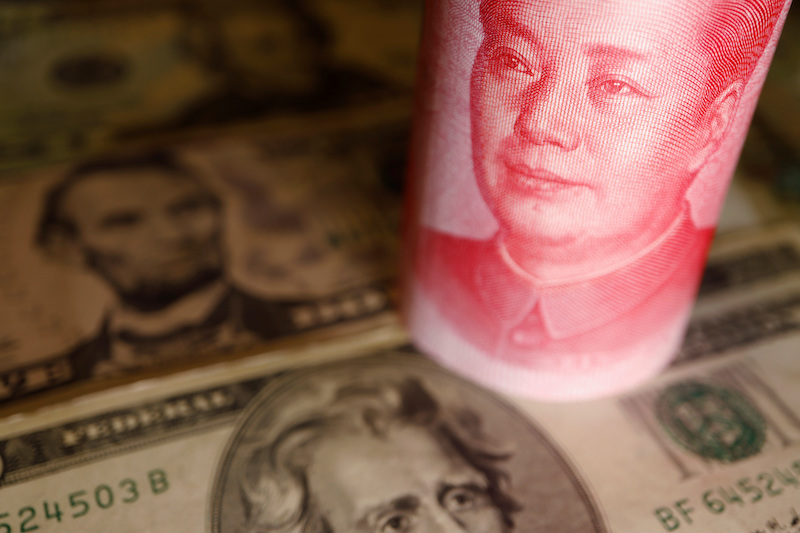China’s state banks stepped up their intervention to defend a weakening yuan on Monday. Sources said banks sold a high volume of US dollars and used a combination of swaps and spot trades.
Six banking sources said the country’s major state-owned banks were spotted swapping yuan for dollars in the forwards market and selling them in the spot market, a strategy used by China in 2018 and 2019 as well.
The selling seemed to be aimed at stabilising the yuan, with the swaps helping procure dollars as well as anchoring the price of yuan in forwards, said the sources with direct knowledge of market trades.
The yuan is down 11.6% versus the dollar this year. It was trading around 7.1980 per dollar on Monday.
ALSO SEE: We Will Never Rule Out Using Force on Taiwan: Xi Jinping
‘Huge’ Dollar Selling Operation
One-year dollar/yuan forwards fell rapidly following the state bank actions, pushing the yuan to 6.95 per dollar. One of the sources noted the size of the dollar selling operation was “rather huge”.
“The big banks want to acquire dollar positions from the swap market to stabilise the spot market,” another source said.
State banks usually trade on behalf of the central bank in China’s FX market, but they can also trade for their own purposes or execute orders for their corporate clients.
A third source noted that the state banks’ trades appeared to be managed so that the country’s closely-watched $3 trillion foreign exchange reserves will not be tapped for intervention.
At the same time, the move helps state banks to procure dollars at a time when rising US yields have made dollars scarce and expensive.
China burned through $1 trillion of reserves supporting the yuan during the economic downturn in 2015, and the sharp reduction in the official reserves attracted much criticism.
- Reuters with additional editing by Jim Pollard
ALSO SEE:
China Says Stabilising Yuan is Priority, After Record Low
China to Lift FX Reserve Ratio, to Slow Yuan Plunge
























